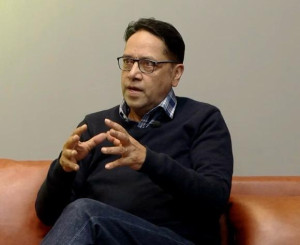Books
12 books to read this summer
Here’s The Kathmandu Post’s top picks to keep you company as the days grow longer.

Women in Nepali Politics, by Binda Pandey
This book comes, as they say, from the horse’s mouth. Pandey is a Member of Parliament, representing the Nepal Communist Party, and is noted for her feminist politics. The book details the involvement of women in Nepali politics, especially inside the CPN-UML party, and their quest and verve.
…

Alchi: Treasure of the Himalayas, by Peter Van Ham
This photo book comprises images of antique artworks inside the premises of Alchi, which is considered one of the best-preserved and scenic temple complexes in the Himalayas. The book features photos by Peter van Ham, essays by the renowned Tibetologist Amy Heller and a foreword by the Dalai Lama.
…

Madhyakaleen Bhaktapur, by Dr Balram Kayastha
This is an account of medieval Bhaktapur, chronicling the events that conspired in the legendary city between 1204 BS to 1826 BS (1147AD to 1769AD).
…

Lone Fox Dancing, by Ruskin Bond
Ruskin Bond is a noted writer of children’s literature, with acclaimed titles such as The Hidden Pool; Tales And Legends Of India; and The Cherry Tree. In Lone Fox Dancing, the author tells the story of his own life.
…

Faatsung, by Chuden Kabimo
Inspired by true events and set in Darjeeling, Faatsung is a novel weaving together stories of people involved in the Gorkhaland movement. In this novel, Kabimo has performed, as a review published in this paper reads, “the near-impossible feat of realising the dreams of an entire population into a book, of grasping decades of armed resistance through words, and justifying the blood of thousands through ink.”
…

Old Demons, New Deities, edited by Tenzin Dickie
The first-ever English-language anthology of short stories by Tibetan writers, Old Demons, New Deities compiles 21 short stories revolving around themes such as politics, communism, freedom and identity. “[The stories] present well-rounded narratives of the Tibetan people that go beyond the binary depiction of them as either a religious, peaceful community or slogan chanting freedom fighters that we often see in popular culture,” reads a review published in the Post.
…

Theatre Of Nepal And The People Who Make It, by Carol C Davis
This non-fiction narrative chronicles the long, storied history of Nepali theatre. Theatre in Nepal has always been vibrant especially during the ’40s BS. Many see the present time as a renaissance of the theatre scene in Kathmandu and beyond. The book comprises of interviews with the movers and shakers of Nepali theatre, their work, and their accomplishments.
…

Everest Reflections on the Solukhumbu, by Lisa Choegyal, Sujoy Das
This book compiles texts about how the lives of Sherpas have changed since the first expedition of Mount Everest and the culture of tourism, trekking and climbing, with compelling photos of the Mount Everest and the Solukhumbu region.
…

Durbar ko Dukhanta, by Sundar Pratap Rana
Written by an ex-armyman who served in the royal palace for 17 years, this book provides a first-hand account of the Royal Massacre that claimed the lives of King Birendra and his family. “Although Rana’s fingers do not point to anyone as the shooter,” reads a review of the book, “the book flows very smoothly, the narrative weaving in and out of incidents, reflections and introspections, and includes references to photographs and other relevant documents.”
…

Maidaro, by Bhupeen
This is a novel by one of the country’s most acclaimed young poets. Maidaro tells the story of a society beset by discrimination. The author adopts a local lingo to tell this story of suspense and magical realism.
…

Aparajita, by Parijat
Aparajita anthologises letters written by Parijat to her younger sister Sukanya. During her brief, wondrous life, Parijat struggled with finance and diseases, and some existential angst, as the emotive letters compiled in this book evince.
…

Kathmandruids: Monomyths & Meanymyths, by Peter J Karthak
This is a novel set in Kathmandu as seen by an outsider living in the city for over four decades. “Breaking into time, space and canon barriers, Peter’s novel creates a sensa, used in the review of paintings—a composition unified yet disjunctive,” as Abhi Subedi says it, “Peter creates a flow of observation and consciousness carrying history, presentism and forward direction put with great energy.”




 10.45°C Kathmandu
10.45°C Kathmandu










